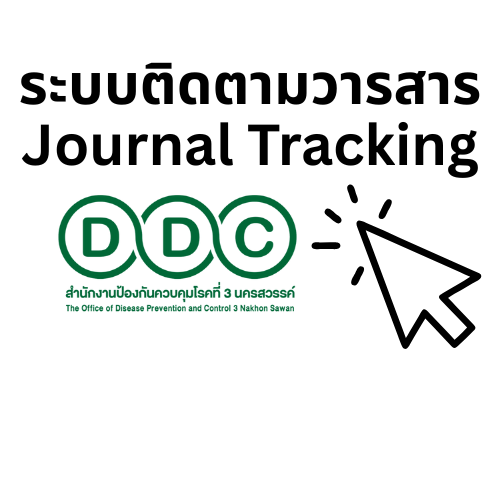Model Development of Food Safety with Community Participation Kamphaeng Phet Province
Keywords:
Model Development of Food Safety, Community Participation, Kamphaeng Phet ProvinceAbstract
This study has two main objectives: 1) to identify factors and components related to food safety operations, and 2) to develop a community-involved food safety operational model. The research is divided into three phases: 1) survey research, selecting 200 samples by simple random sampling; 2) participatory action research, selecting 10 key informants by purposive sampling; and 3) connoisseurship, selecting 7 experts by purposive sampling. The research design was a mixed-method sequential exploratory study, starting with a quantitative study followed by a qualitative study. The findings reveal that the majority of the sample group is female (60.0%) with an average age of 44 years and 10 months. Most entrepreneurs are involved in bottled water production (82.2%) in municipal and rural areas (55.0% and 45.0%, respectively). Significant correlations exist between variables related to food safety operations, including knowledge of food safety, information access, understanding, data evaluation, and decision-making abilities; r= .169, .267, .263, .211, .233, and .237, respectively. Structural equation modeling shows that knowledge components related to food safety and health significantly influence food safety operations (23.0% and 17.0%, respectively). model fit c2 = 24.061, P =0.088, DF = 16, CMIN/DF = 1.504, RMR = 0.143, GFI = 0.974, AGFI = 0.928, RMSEA= 0.050. The participation research showed that the operating model for food safety with community participation consists of six steps from the evaluation of connoisseurship that can be put into practice to be effective. The result suggests that policymakers should support entrepreneurs in implementing successful food safety operations with community involvement.
References
Strategy and Planning Division, Ministry of Public Health. Public Health Statistics A.D.2021. [Internet]. 2024. [ Accessed 2 January 2024]. Accessible from https://shorturl.asia/orcmg. (in Thai).
Bureau of Food Safety Extension and Support. Procedure of Provincial Food Safety Quality
System Version 2020. Food Standard Agency, Office of the Permanent Secretary, Ministry of
Public Health; 2023. (in Thai).
Office of the Permanent Secretary. Food Act B.E. 2522 along with ministerial regulations and
announcements from the Ministry of Public Health (revised edition); 2005. (in Thai).
Bureau of Food Safety Extension and Support. Procedure of Provincial Food Safety Quality
System Version 2016. Food Standard Agency, Office of the Permanent Secretary, Ministry of
Public Health; 2021. (in Thai).
Bureau of Food Safety Extension and Support. The report on the food safety situation, fiscal year
[Internet]. 2024. [ Accessed 2 January 2024]. Accessible from https://rb.gy/yh52l9.
(in Thai).
Selenger, D. Participatory action research and social change. New York: Cornell University;
Attasit Pankaew, Pattarawut Choeisiri, Kulachart Taksapaibool. Developmental Scheme for
Village Committee Organization as an Instrument for Implementing ‘Pracharat Policy on the
Basis of the Philosophy of Sufficiency Economy. Journal of Politics and Governance. 2018;
(2): 1-15. (in Thai).
Pariya Thomudtha, Adisak Thomudtha. Food Safety Management Model by Participation in
Mahasarakham Hospital. THAI FOOD AND DRUG JOURNAL. 2022; 29(1): 42-58.
Krejcie, R. V. & Morgan, D. W Determining Sample Size for Research Activities. Educational
and Psychological Measurement. 1970;30(3): 607-10.
Bureau of Food Safety Extension and Support. The report on the food safety situation, fiscal
year 2023. [Internet]. 2024. [ Accessed 2 January 2024].
Accessible from https://shorturl.asia/mFR1L (in Thai).
Anantitra Donbanthao. Business Strategy for Small and Medium Enterprises (SMEs)
Entrepreneurs in Kamphaeng Phet Province. Journal of Management Science Pibulsongkram
Rajabhat University. 2023; 5(3): 21-39.
Marutha KJ, Chelule PK. Safe Food Handling Knowledge and Practices of Street Food Vendors
in Polokwane Central Business District. Foods 2020; 9:1560.
https://doi.org/10.3390/foods9111560 PMID: 33126473
Meher MM, Afrin M, Talukder AK, et al. Knowledge, attitudes, and practices (KAP) of street
food vendors on food safety in selected areas of Bangladesh. Heliyon 2022; 8:e12166.
https://doi.org/10.1016/j. heliyon.2022.e12166 PMID: 36531639
Jores D, Arif MT, Rahman MM. Factors Associated with Food Hygiene Practices Among
Street Food Vendors in Padawan, Sarawak. Borneo Journal of Resource Science and
Technology 2018; 8:56–65 https://doi.org/10.33736/bjrst.824.2018
McCormack. L et al. Measuring health literacy: a pilot study of a new the skills-based
instrument. The Journal of Health Communication. 2010; 15(S2): 51-71.
Zarcadoolas C, Pleasant A, and Greer DS. Understanding health literacy: an expanded model.
Health Promot Int. 2005; 20(2): 195-03.
Manganello Jennifer A. Health literacy and adolescents: a framework and agenda for future
research, Health Education Research. 2008; 23(5): 840–47.
Downloads
Published
How to Cite
Issue
Section
License
Copyright (c) 2024 Journal of Disease and Health Risk DPC.3

This work is licensed under a Creative Commons Attribution-NonCommercial-NoDerivatives 4.0 International License.
Copyright notice
Article published in the Journal of Disease and Health Risk DPC.3 Nakhon Sawan. It is considered a work of academic research and analysis as well as the personal opinion of the author. It is not the opinion of the Office of Disease Prevention and Control 3, Nakhon Sawan. Or the editorial team in any way Authors are responsible for their articles.
Privacy Policy
Name, address and e-mail address specified in the Journal of Disease and Health Risk DPC.3 Nakhon Sawan. It is used for identification purposes of the journal. And will not be used for any other purpose. Or to another person.









